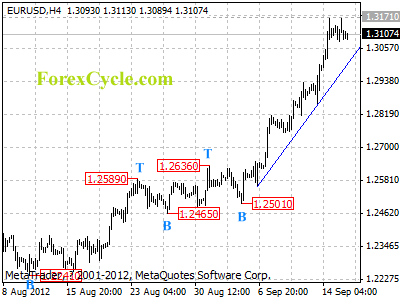You should have seen the excitement in the eyes of my colleagues yesterday when I told them I was going to a tin market seminar!
I had to beat them off with a stick just to keep my ticket. It was fierce!
OK. It wasn’t quite like that. But I think tin is interesting anyway.
And more importantly, I think it’s on overlooked investing opportunity that could make investors a good return…
I’ve been ‘banging the tin drum’ for a few years now, and looking to play the market through small-cap tin stocks. This worked well, with the two stocks I tipped reaching gains of 82% and 54% at their peak.
Since then the tin price has pulled back, the mining sector has been belted, and both stocks are back to where we started.
Although it’s better if the share price goes up, this price action is actually great news if you’re new to the tin story. Why? Because tin looks primed for another big rally, like the first time I tipped tin stocks. In other words, it’s time for a second bite of the apple.
But why the excitement over tin? And what’s it used for?
Big Demand Brewing for Tin
Tin’s main use is in the electronics industry. Apparently after a slow year or two there are signs of life coming back to this sector, generating a rise in tin demand. Yesterday’s tin seminar gave me a chance to get an update on the market, and give me a few surprises to boot.
For example, I had no idea that tin is now used significantly in lithium ion batteries.
Thanks to use in mobile phones, tablet computers and laptops, and now that the hybrid car industry is taking off, the lithium ion battery market is really exploding. Even the conservative analysts at broking firm Citi reckon it will triple in size within a decade.
This means that (until recently unknown to me) the Diggers and Drillers buy list has an exposure to three of the main ingredients of lithium ion batteries.
We’re already sitting on good returns of 27% and 128% in the last few months from tipping lithium and graphite stocks (also used in lithium ion batteries). So it was music to my ears that tin is now a major input to the new generation lithium ion batteries made by Sony and 3M.
Peter Kettle, the Manager of Markets for the International Tin Research Institute (ITRI), gave the talk at yesterday’s presentation. This is the peak body for the tin market, which is now worth around $10 billion annually.
When I asked him how much demand for tin lithium ion batteries is generating, he estimated it’s already adding 1-2% of total demand. This may not sound like much, but it’s big enough to be a swing factor in a market that’s as tight as tin’s.
The reason things are so tight is that the main supplier of tin, Indonesia, is struggling to maintain production. A lot of supply was coming from small inefficient operations, dredging ‘alluvial tin’ from rivers. But most of the ‘easy stuff’ is gone now, and besides, the government has clamped down on such an environmentally destructive method of mining.
So there is now a vacuum for a few years until new projects come on line. And that means prices should only go one way until then.
Tin Stocks Set to Fly?
Another reason to expect tin prices to keep rising now is the Quantitative Easing (money printing) I wrote to you about yesterday. The last few times the Fed embarked on this madness, commodity prices soared. As tin makes up one of the smallest commodity markets of all, the tin price soared more than any of its peers in response to the newfound liquidity sloshing around in the markets.
For example, during QE2 the tin price increased more than 100%. And when the European Central Bank carried out their Long Term Refinancing Options (LTRO1/2) at the start of this year, tin rallied over 30%.
Now we have open-ended QE from the Fed, AND talk of unlimited bond purchases by the European Central Bank.
This is a double whammy of money printing from the world’s two largest central banks — at the same time.
Commodity indices like the CRB index have already rallied over 15% in the last few months in anticipation of this. Likewise, tin has had a head start too.
Quantitative Easing to Send the Tin Price Soaring — Like Last Time?

Commodity analysts, CRU, updated their commodity forecasts recently. The only commodity they are more bullish about than tin is palladium.
It’s hardly a fair competition though, as palladium is at the mercy of the chaotic and fatal mining protests in South Africa, the world’s key source of the metal. Though, this comparison puts the bullish set-up in tin in some sort of context.
Everything is now in place for tin to have a big run up. Demand is rising and new uses are emerging, supply is struggling, and the market is about to see a massive rush of liquidity looking for a home.
Peter Kettle from ITRI didn’t want to be held to an official forecast, but thinks $35,000 per tonne is possible. That would mean a 62% price jump from current levels which may sound bullish, but seems quite likely to me given that tin increased 100% during QE2.
And besides, tin has already reached those seemingly lofty levels before.
I’d be tempted to go one better, and say that if tin doubles as it did last time, it could punch through $40,000 by the end of this rally.
If it does — expect tin stocks to come back to life again very soon.
Dr. Alex Cowie
Editor, Diggers and Drillers
Related Articles
What You Must Do to Survive the Coming China Crash
Why Does the World Still Trust This Man?


